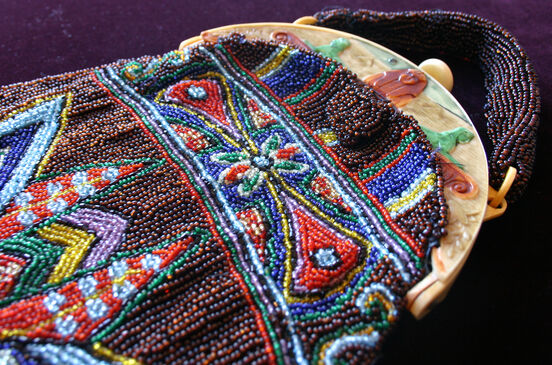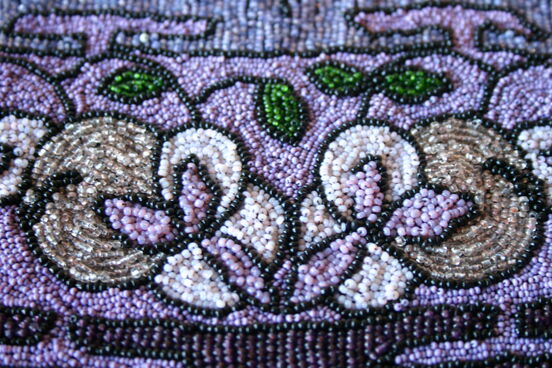In an age when leisure was a large aspect of some women's lives the making of 'fancy work' was widespread. Within this category the making of a beaded bag was one of the most ambitious of undertakings. If a woman did not wish to make her own bag the alternative was to buy one made by a skilled maker. Such makers earned handsome amounts as beaded bags have always been costly to buy and costly, in terms of time, to make. The costliness of beaded bags has ensured that they have been carefully used and kept.
Collector Paul Orsman acquired his first beaded bag (a Middle European rectangular bag with heraldic decoration) in 1974 as part of a consignment of second goods for his regular market stall. It didn't sell and as the jewel like colours of the beading attracted him he decided to keep the bag. And in doing so a light was turned on: his collection of beaded bags had been started.
Many of these bags were acquired in New Zealand but once his enthusiasm had reached certain levels he tried to purchase bags as souvenirs of trips to particular cities, in New Zealand and elsewhere. Trips to the United Kingdom and the United States over the years provided opportunities to add key works to the collection as opposed to acquiring works as souvenirs. At its height the collection was around 300 works and recently it has been reduced to about 160 works. This selection concentrates on two groups, Victorian and Art Deco bags. The latter group are characterised by the strong colours introduced into European fashion by the Ballet Russe in the 1910s -which were widely used in the 1920s - and the use of the new material, Bakelite, which enabled the production of extravagantly decorative frames and handles.
The Victorian bags and purses were either knitted or crocheted and patterns and directions for the leisured home-maker were widely available. The publication of patterns and directions was a large industry in itself. Nineteenth century bags were usually of a drawstring design however as designs became more complicated home makers could send their beaded bag away to be fitted with a rigid frame, or later on, purchase a frame to which they could fit their beading to. This collection features many bags with floral motifs: a favourite of this collector.
Like many discerning collectors his 'discovery' of these luxurious objects was at their economic nadir. Many of these works were purchased for less than ten and then twenty dollars. However one work in this selection was purchased overseas for around a thousand dollars. The value of these bags, for their collector, lies in the aesthetic pleasure they provide together with the deep pleasure of having saved these 'outmoded' but costly 'fancy work' objects of desire.
Objectspace's Vault Programme features distinctive works from private collections. Objectspace is keen to work with private collectors to enable them to share their collections and enthusiasms on a short term basis. Objectspace acknowledges the generosity of collector Paul Orsman.

Courtesy of Paul Orsman.

Courtesyof Paul Orsman.

Courtesy of Paul Orsman.